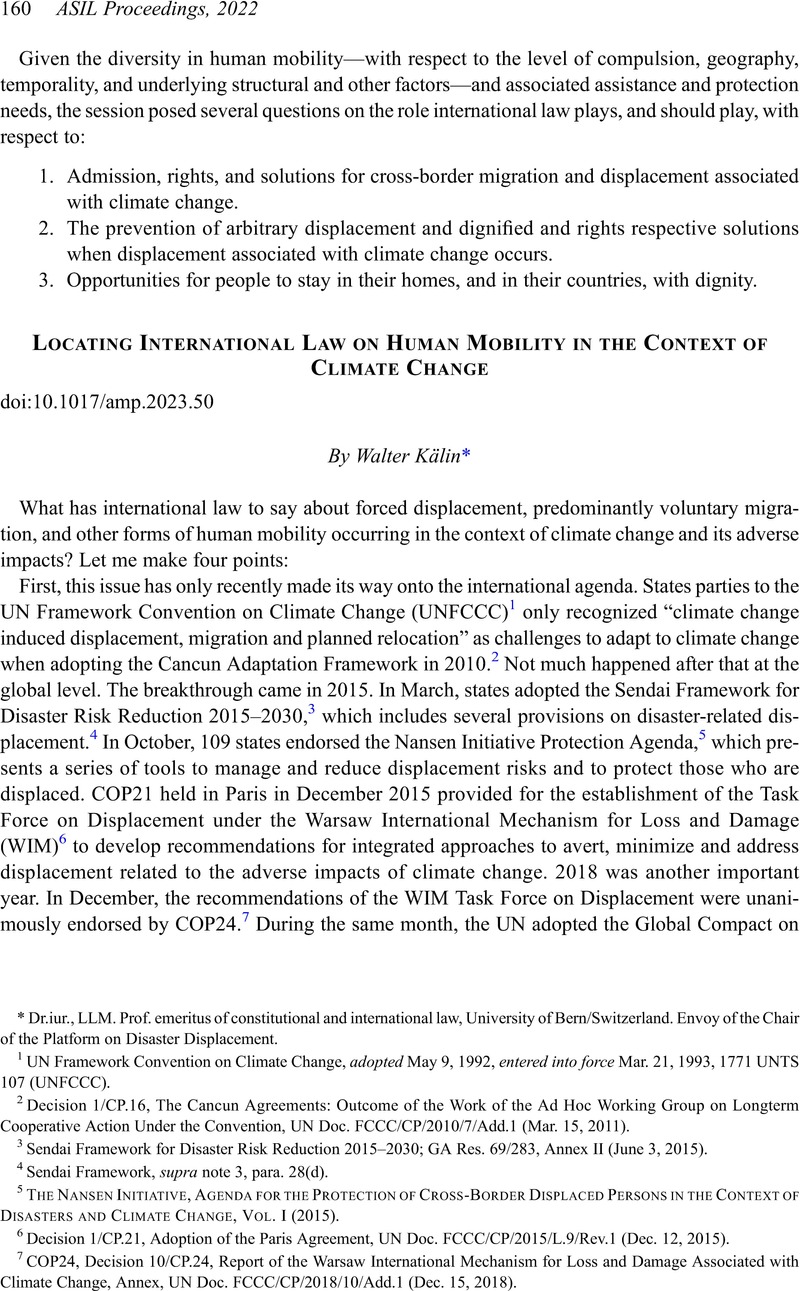No CrossRef data available.
Published online by Cambridge University Press: 24 March 2023

1 UN Framework Convention on Climate Change, adopted May 9, 1992, entered into force Mar. 21, 1993, 1771 UNTS 107 (UNFCCC).
2 Decision 1/CP.16, The Cancun Agreements: Outcome of the Work of the Ad Hoc Working Group on Longterm Cooperative Action Under the Convention, UN Doc. FCCC/CP/2010/7/Add.1 (Mar. 15, 2011).
3 Sendai Framework for Disaster Risk Reduction 2015–2030; GA Res. 69/283, Annex II (June 3, 2015).
4 Sendai Framework, supra note 3, para. 28(d).
5 The Nansen Initiative, Agenda for the Protection of Cross-Border Displaced Persons in the Context of Disasters and Climate Change, Vol. I (2015).
6 Decision 1/CP.21, Adoption of the Paris Agreement, UN Doc. FCCC/CP/2015/L.9/Rev.1 (Dec. 12, 2015).
7 COP24, Decision 10/CP.24, Report of the Warsaw International Mechanism for Loss and Damage Associated with Climate Change, Annex, UN Doc. FCCC/CP/2018/10/Add.1 (Dec. 15, 2018).
8 GA Res. 73/195, Global Compact for Safe, Orderly and Regular Migration (Dec. 19, 2018); GA Res. 72/182, Annex (Jan. 19, 2018).
9 Daria Mokhnacheva, Implementing the Commitments Related to Addressing Human Mobility in the Context of Disasters, Climate Change and Environmental Degradation, Platform on Disaster Displacement (2022).
10 Regional Conference on Migration, Protection for Persons Moving Across Borders in the Context of Disasters. A Guide to Effective Practices for RCM Member Countries (Nansen Initiative, November 2016); Conferencia Suramericana sobre Migraciones, Lineamientos regionales en materia de protección y asistencia a personas desplazadas a través de fronteras y migrantes en países afectados por desastres de origen natural (CSM 2018).
11 David J. Cantor, Environment, Mobility, and International Law: A New Approach in the Americas, 21 Chi. J. Int'l L. 263, 322 (2021).
12 See Thomas Cottier & Maya Hertig, The Prospects of 21st Century Constitutionalism, 7 Max Planck Y.B. UN L. 261, 300 (2003).